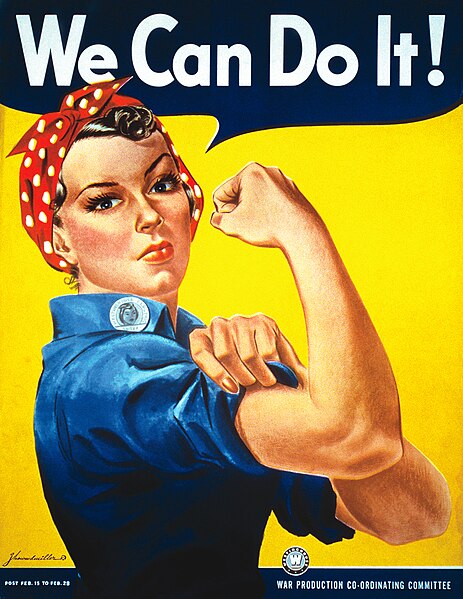Throughout history there have been movements to foster equality. These gave us equality through women’s right to vote and by stopping racial segregation. And, yes, today people are treated more fairly than a hundred years ago. But in order to create real equality everyone must be given not only fair voting rights, but also equal opportunity to lead. Leaders are those that get to make the world-changing decisions and shouldn’t women and men should have equal opportunity to influence the world? We make up half the population and are as qualified to make these decisions so shouldn’t we get to sit at the table of leaders well?
Ambition and The Stereotype Threat
When I read an excerpt of the book “Lean In: What Would You Do If You Weren’t Afraid” by Sheryl Sandberg it got me thinking about women and ambition. Sandberg attributes the lack of women leaders to the “leadership ambition gap”, and the surveys Sandberg waves in our faces show women as less ambitious. For example, one “survey of college students found that more men than women chose ‘reaching a managerial level’ as a career priority” (Sandberg 647). Basically, she claims that women’s lack of ambition restricts them from filling as many leadership positions. However, that does not ring true to me, it must be more complex.

Source: Blue Diamond Gallery
Yes, studies say women are less ambitious. And, yes, women put those answers down on paper, but I believe that women want more power than they admit. Power and leadership are what society discourages women from having so they pretend not to have those characteristics. Yet, the desire to succeed and lead is still in there somewhere, even if society is suppressing it. One way society discourages leadership in women is by seeing girls that take charge as bossy or domineering. This is especially awful because boys in this position are seen as confident, powerful, and strong. The bossy girls believe they are exerting a negative behavior, so they hide their desire and ability to lead.
The excerpt from Sandberg ‘s book introduced me to stereotype threat, a phenomenon that “Social scientists have observed that when members of a group are made aware of a negative stereotype they are more likely to perform according to that stereotype” (653). Basically, when people are reminded of the shortcomings that society expects from them, they act according to those expectations.
There is a clear connection been the lack of ambition women admit to and the stereotype threat. These women are only less ambitious because they are fulfilling the predetermined idea of what women should display as “the stereotype threat” phenomenon suggests. The stereotype that men are better leaders than women is what needs to change. Rather than believing the stereotype that women worse leaders, society must see women as equally capable at leading. That big change starts with changing little things such not referring to girls as domineering when they attempt to lead. We should call these girls strong, confident, and commanding as we would the boys.
The Balance of Family, Work, and Personal Life

Source:Pexels
Many female leaders scale back the intensity of their work in order to spend time with children. But, society insists women can have a leadership position and a healthy family life. They believe that if she has to take time off she must not my parenting very efficiently. One blatant example of this unrealistic expectation is discussed by Anne-Marie Slaughter, in her article “Why Women Still Can’t Have It All”. She states that “In Washington, ‘leaving to spend time with your family’ is a euphemism for being fired”. And in her experience the societal pressure to have a perfect family and rigorous work life is an unrealistic expectation. Women just can’t work harder in order to make time for a family and rigorous work life.
I have seen first-hand the stress of it all within my family. A point of contention between my parents has always been my mom’s demanding job.And, even though I’m proud to say that my mom leads a division of a hospital, I have seen my dad has pester her about the long hours, how little she sees her daughters, and how she doesn’t care for herself. As little as I like to admit it, he has a point. I have watched throughout my life as she sacrifices her personal health in order to be a leader and a mother.
I am not saying that women can’t have a leadership position and a family, my mom has certainly done that. I am saying they can’t have an intense work life, a fulfilling family life, and care for themselves as the same time. It is indeed possible to balance two of those aspects of a healthy life, but it requires a sacrifice in one area. But no one should have to give up their family or their own health for their work.
If we could increase leave, shorten work days and create more flexible hours then we would spend less time working. We could invest our time in family life, or personal health. This would benefit everyone (men and women) with the added bonus of giving women a better chance to pursue leadership positions. As Sandberg wisely puts it “Seeking out a more balanced life is not a woman’s issue; balance would be better for all of us (654)”.
Embracing Every Step Towards Equality

Source: Wikimedia
What I want to stress is that I am aware of other inequalities in the work place, something Slaughter addresses with finesse. As she writes of the difficulty of the family-work balance, she stresses that “[She is] well aware that the majority of American women face problems far greater than any discussed in [her] article. [She is] writing for [her] demographic- highly educated, well-off women who are privileged enough to have choices in the first place”. In essence, Slaughter gestures to the larger picture by recognizing that there are those who are treated much worse than wealthy, white women.
So whether the next step towards progress helps African-Americans, the LGBTQ community, Native Americans, women, the impoverished, children, or immigrants we must support it. If those inequalities can be mended, then women will eventually be treated more fairly in the workplace. All we can hope is that as society develops respect for our strong, powerful, and commanding women. With that respect will come an increase in the ambition of women and therefore, hopefully, an increase in the number of women leaders.
Works Cited
Sandberg, Sheryl. “Lean In: What Would You Do If You Weren’t Afraid.” They Say, I Say. Eds Gerald Graff, Cathy Berkenstein, Russel Durst. New York: W.W. Norton, 2015. 642-658.
